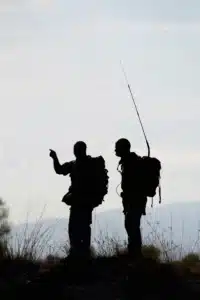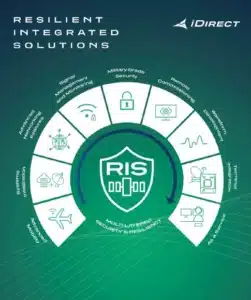By Dave Davis, Technical Director, Global Government
I recently attended an event in London called IET MilSatcom. It’s always a vibrant and interactive conference and this one was no exception. However, this year there was one theme that loomed larger than any other – Resilience.
Resilience was featured in the vast majority of presentations, across government and industry and from the end user community to procurement. But what is resilience? The dictionary definition is “the ability of an ecosystem to return to its original state after being disturbed”. Resilience does not mean you won’t be attacked, or have to work in a degraded environment, but it does mean that you can return to effective communications in the shortest possible time.
PACE and the pace of change were subsidiary themes that came through for me. Change is inevitable, but the development and adoption cycle is so much quicker than it once was.
 A multi-layered approach is key, with an effective and flexible PACE plan, for Primary, Alternate, Contingency and Emergency communications options. ST Engineering iDirect’s VP of EU Programs & Government Relations, Koen Willems’s blog article outlines this approach. By having multiple options available a battlefield commander can access vital information in a timely manner.
A multi-layered approach is key, with an effective and flexible PACE plan, for Primary, Alternate, Contingency and Emergency communications options. ST Engineering iDirect’s VP of EU Programs & Government Relations, Koen Willems’s blog article outlines this approach. By having multiple options available a battlefield commander can access vital information in a timely manner.
But resilience isn’t just a technical issue. A thirst for throughput and a reliance on high data rate battlefield management systems increases the risk of the humans using the communications becoming dependent and deskilled. Exercising operations in a congested and contested environment is key to building human resilience.
This is starting to happen with some military staff approaching a PAN model rather than PACE, where they exercise with just primary and alternate comms, then nothing, meaning they must rely on mission command where the deployed troops operate to achieve the intent of the commander, not necessarily relying on detailed step by step instructions. This requires the commanders to clearly articulate their intent, and then empower subordinates with the freedom of action and resources to act on their own initiative to achieve success. A practice that can be unnerving for the uninitiated.
Mission command relies on trust, mutual understanding, and initiative at all levels, underpinned by a set of good leadership and active followership principles. Timely and accurate communication up and down the chain of command is critical to this success, but more importantly, the ability to operate without those communications is of utmost importance.
The OODA loop was discussed on the panel I was moderating. Meaning ‘observe-orient-decide-act’, this concept was developed by Colonel John Boyd of the US Air Force and was applied at combat level during military campaigns. Today, it is often applied to understand commercial operations and learning processes. It explains how agility can overcome raw power in dealing with human opponents and is especially applicable to cyber security and cyberwarfare. This can be either sped up by effective communications provision or slowed down if communications are not resilient.

I was invited to speak recently on the subject of “Military satellites, has defence placed too much reliance on space?” The conclusion was “yes”, there is too much reliance, but with the right mitigation and a balanced approach of PACE, a blended technology portfolio, with multi-network, multi-frequency, diverse options, you can have a plan which will provide connectivity with resilience. As multi-orbit operation becomes more common, this is another level of diversity that can only help provide more and more resilience. When you add non-space assets, such as HF and Tropospheric Scatter, which makes signal interception more difficult, you have the complete solution.
The ST Engineering Resilient Integrated Solutions (RIS) portfolio is one part of the puzzle. To find out more, go to our RIS Product Brochure to explore how RIS can benefit military and government users.
Come talk to our team at the upcoming DSEI 2023 and Defence in Space shows!